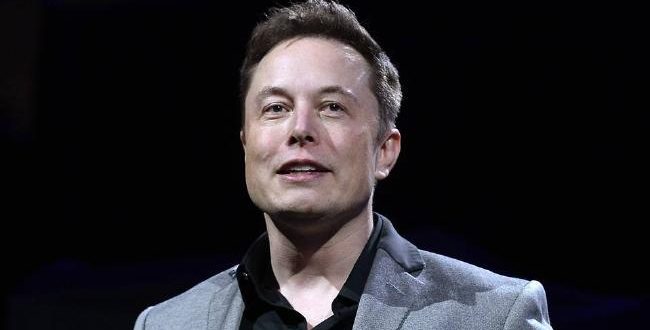It has an air of Hollywood. Tesla founder Elon Musk tweets on Friday that he can fix South Australia’s energy problems in 100 days with his solar power battery storage.
Australian technology billionaire and energy crisis “fixer” Mike Cannon-Brookes tweets his enthusiasm for the plan. “You’re on mate,” he tweets to Musk. “Give me 7 days to try sort out politics & funding. DM me a quote for approx 100 MW cost — mates rates!”
SA Premier Jay Weatherill responds on Twitter, saying: “we’re on it”. Malcolm Turnbull tweets to thank Musk for “a great in depth discussion”.
It seems the Donald Trump methodology of thinking aloud on Twitter is expanding to high level negotiation and diplomacy. In a few tweets, a major energy problem facing Australia is all but solved. It appears done and dusted.
Alas, there are several chapters to go before a Tesla solution is viable. That starts with an accurate costing stipulating what it covers.
How much? Does the solution cover just batteries, or also construction and solar panels? Does this battery system store just renewable energy, does it store grid energy siphoned away at low demand times for later use, or both? And do costings include the replacement of lithium-ion batteries as their storage capacity declines in time?
Tesla’s current warranty guarantees 70 per cent capacity at 10 years, so while the decline isn’t rapid, it needs to be factored in.
There’s also disposal. If SA or the country generally embraces grid-scale battery-storage solutions, what plan do we have to dispose of thousands of batteries?
None of these concerns is a deal breaker but the information needs to be on the table.
As for the 100 days, Simon Hackett, chief executive of rival battery maker Redflow, points out that other battery makers should be given a go. Yesterday he said any government expenditure on grid-scale battery storage should be done via a competitive tender.
“That tender should evaluate the total lifetime operating cost of a solution, not merely its sticker price,” he told The Australian.
At government level, Elon Musk’s 100 days brings a much needed focus on large scale battery storage and its potential to solve grid storage problems. Batteries charge at low demand times and empty back to the grid during peak loading.
Right now these battery solution seem a more expensive option than a coal or gas generator.
Last week The Wall Street Journal quoted figures by US financial adviser Lazard that power from lithium-ion battery installation cost between $US285 and $US581 a megawatt-hour. From a new gas peaker plant the cost was between $US155 and $US227 a megawatt-hour, the report said.
But time is on the side of battery technology as the price per kilowatt hour is plummeting. For example, this year’s Tesla Powerwall home batteries cost the same as last year’s, but have twice the capacity.
Musk’s 100-day pledge is a wake up call for Australian politicians who haven’t grappled with the merits of using large arrays of batteries to solve power fluctuation problems.
Prime Minister Malcolm Turnbull has backed so-called clean coal technology as a way to even out supply problems that he says is caused by an over-reliance on renewables.
Musk is saying — sure, you need to stabilise the energy system, but that can be achieved by building these battery installations.
Musk can speak with some authority, because in California, Tesla has built an 80 MWh plant in Ontario, California, consisting of 386 Powerwall 2 batteries which it says can power about 15,000 homes for four hours daily.
Some 20 Tesla Powerpacks supply 2MW of power to the StubHub Centre, a major sports venue in southern California, while 272 Tesla Powerpacks deliver 52 MWh of power to a major installation on the Hawaiian island of Kauai. Other US manufacturers are rolling out large scale battery solutions too.
In South Australia Tesla also isn’t alone in suggesting battery solutions.
Energy retailer AGL has been building a massive “virtual power plant” which involves giving batteries to customers who are prepared to let the energy company upload their battery power to the grid in times of peak-load. AGL sold out its first release of 150 batteries last year, and another 350 batteries were being made available.
You get a Sunverge 11.6 kWh battery system for $3,849, which includes hardware, software and monitoring services and installation. That’s cheaper than Tesla’s offering.
In December last year SA Power Network completed the installation of the 100th battery for a virtual power network it is developing.
CSIRO has been developing technology for virtual power plants which monitors the power flowing into the grid from various sources and smooths it out into a single electricity supply.
Australia’s Lyon Group and US thermal storage developer SolarReserve have both floated power generation and storage solutions for South Australia.
But it’s Elon Musk’s high profile Tesla branding that stands to push the storage debate along.
Cannon-Brookes yesterday spent an hour with Australian chief scientist Alan Finkel, saying on Twitter that he was “inspired by his progressive thinking on our energy future”.
“It’s been an incredible 48 hours. It’s evident that there is popular support for an alternative approach to solving the nation’s electricity challenges,” he told The Australian. “I’m excited to see what unfolds this week.”
Reader comments on this site are moderated before publication to promote lively and civil debate. We encourage your comments but submitting one does not guarantee publication. We publish hundreds of comments daily, and if a comment is rejected it is likely because it does not meet with our comment guidelines, which you can read here. No correspondence will be entered into if a comment is declined.





